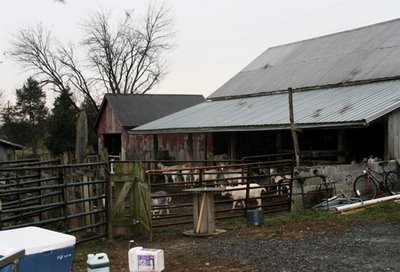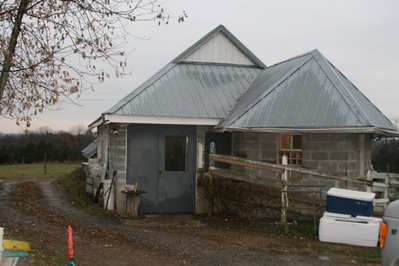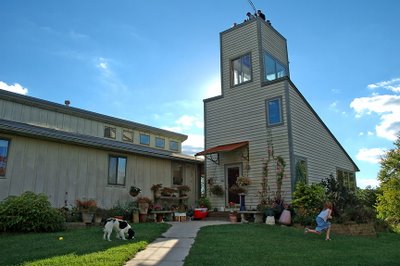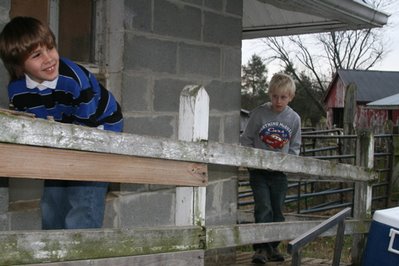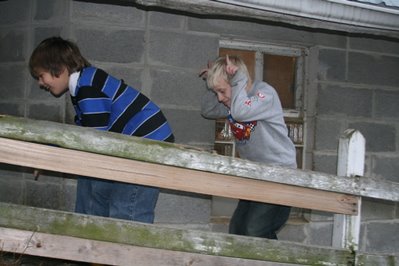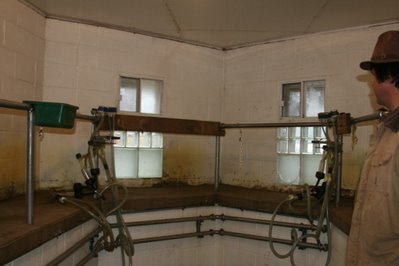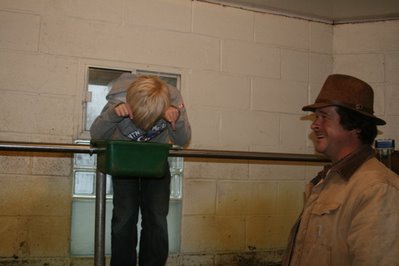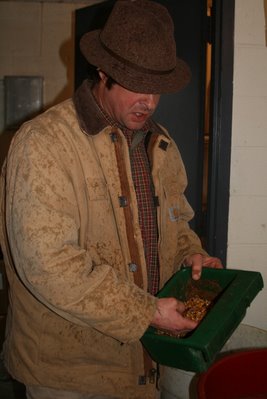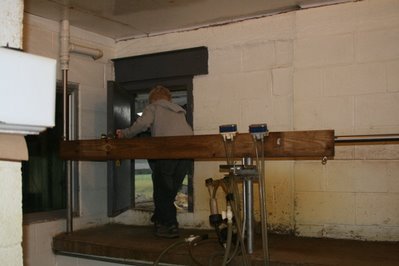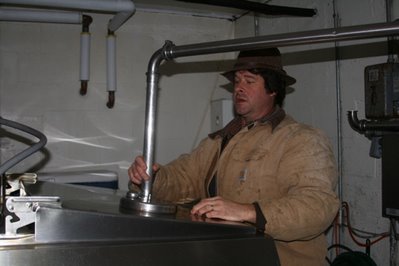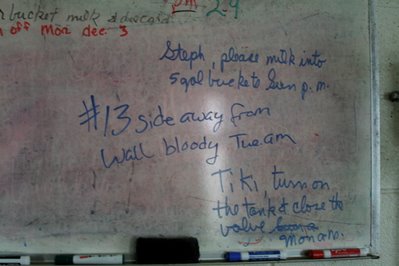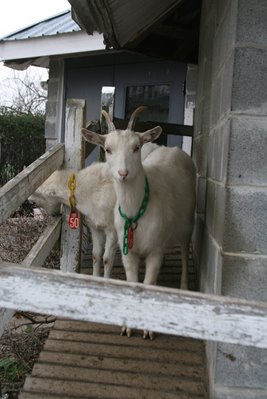Elsewhere Around the Farm
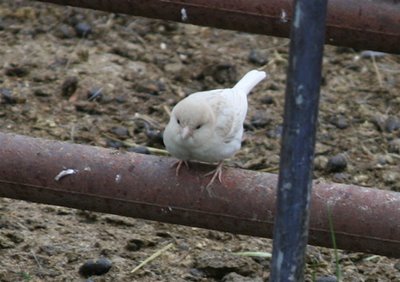 An albino house sparrow that hangs with the flock of about a hundred around Pipe Dreams Farm. Cute, yeah, but I wouldn't want to put up a bluebird house within a mile of there. That's something I'll have to figure out when I become a goat farmer--what to do with all the house sparrows that eat the spilled feed and pick grain out of their manure.
An albino house sparrow that hangs with the flock of about a hundred around Pipe Dreams Farm. Cute, yeah, but I wouldn't want to put up a bluebird house within a mile of there. That's something I'll have to figure out when I become a goat farmer--what to do with all the house sparrows that eat the spilled feed and pick grain out of their manure.The farm kitchen at Pipe Dreams--a long, long board table, soft light coming from the windows, glazing the old wood.
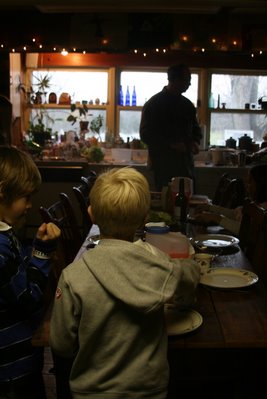 Here, we had a sumptuous meal of grilled steaks and salad. The lettuce was hydroponically grown by a friend; Brad had gotten the beef from his next door neighbor: Jersey steers. Think about it: the dairy industry can only use heifers. That means that every bull calf born gets castrated and raised for beef. But we don't, as a rule, get to taste the meat of an uncommon dairy breed like a Jersey, which gives the highest butterfat milk of all of them.
Here, we had a sumptuous meal of grilled steaks and salad. The lettuce was hydroponically grown by a friend; Brad had gotten the beef from his next door neighbor: Jersey steers. Think about it: the dairy industry can only use heifers. That means that every bull calf born gets castrated and raised for beef. But we don't, as a rule, get to taste the meat of an uncommon dairy breed like a Jersey, which gives the highest butterfat milk of all of them.I have eaten several country-club filet mignons recently, and I can say that these Jersey sirloins were far superior. More tender, infinitely tastier. Knowing that they were raised right next door, on open pasture, humanely and without steroids and antibiotics, was good. I envy Brad and Jenny's association with their farming community. All their eggs, meat and milk comes from neighbors, or their own farm. How I would love to be able to live like that, buying our food direct from the producers. Maybe we'll finish cleaning out that old chest freezer and get serious about buying local.
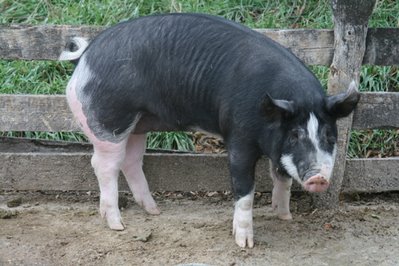
These Berkshire hogs are in the back field at Pipe Dreams, being raised for meat. They were spooky and skittish, in marked contrast to the goats. Brad thought that it was due to some early experience, because he'd had other Berkshires who were very confiding. He said, though, that he doesn't try to get to know his hogs. "You have a different relationship with an animal you're going to eat. You can get attached to an animal you're milking."
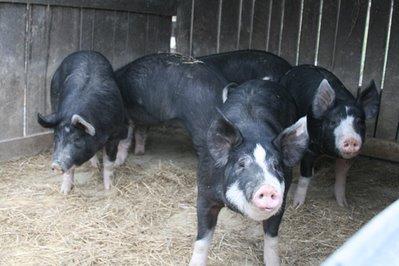
I would have to stay waaay away from these hogs. One touched me with its wet pink snout. The rest seemed to suspect me of being the pork fan that I am. But the goats, the goats. I was free to fall in love.
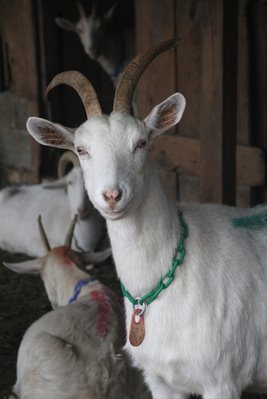
Maybe this nanny will make it onto my next Zickefoose Wine label. That's all the goat posts. We're going back to New Mexico, at least in a virtual sense, this week. I've got some pretty birds saved up to show you.
Labels: Berkshire hogs, goat farm, Jersey beef

